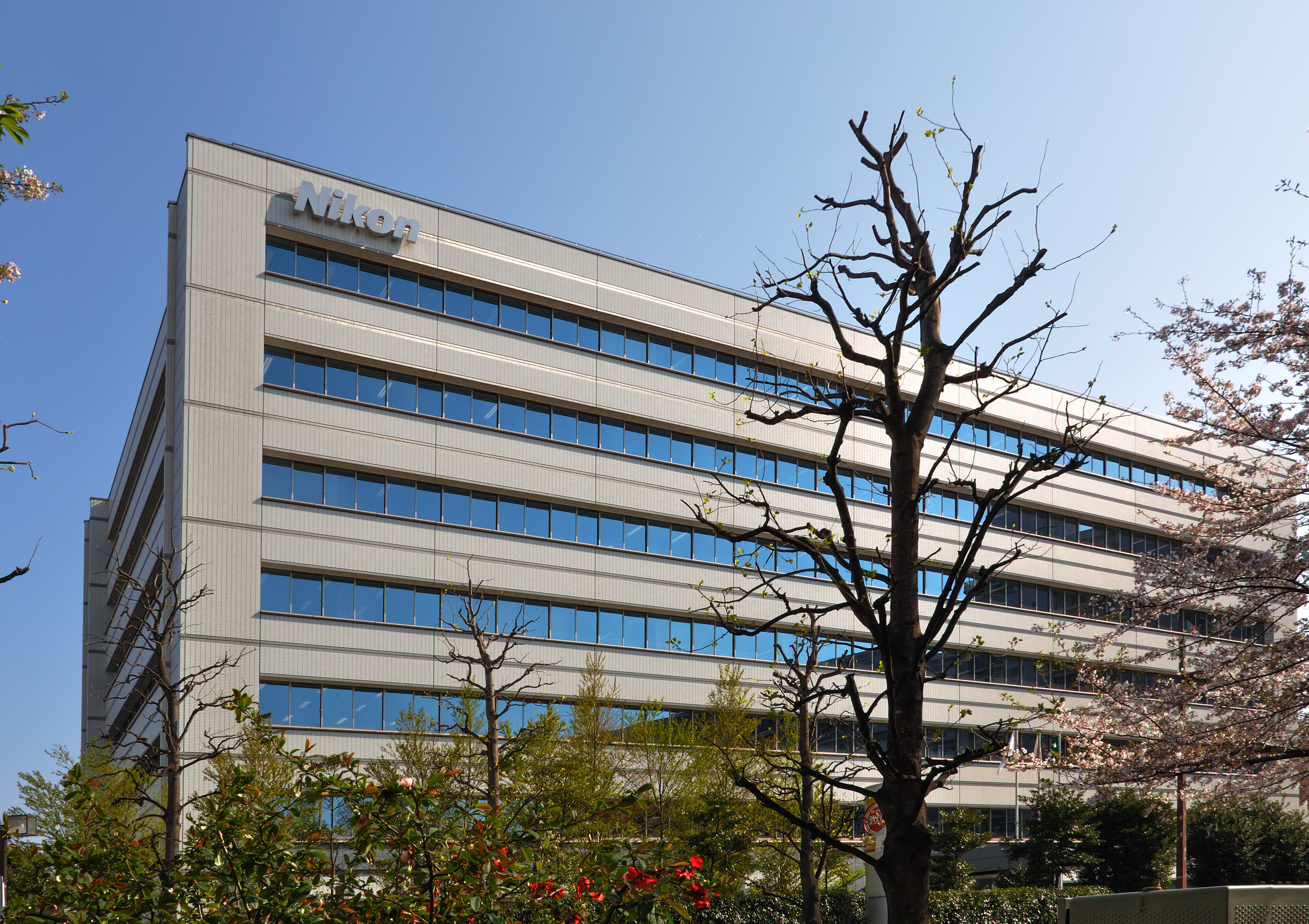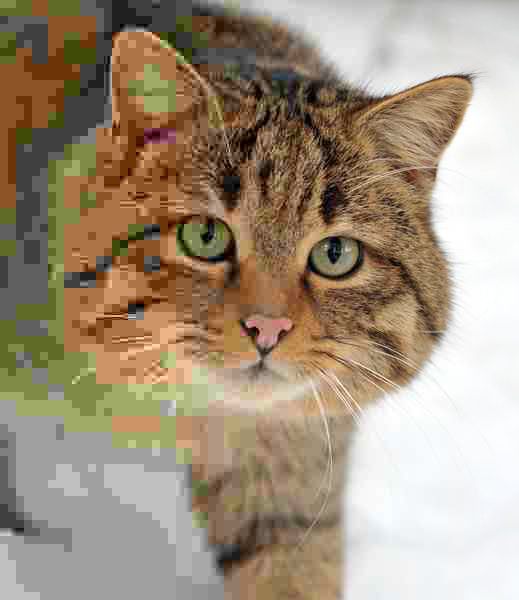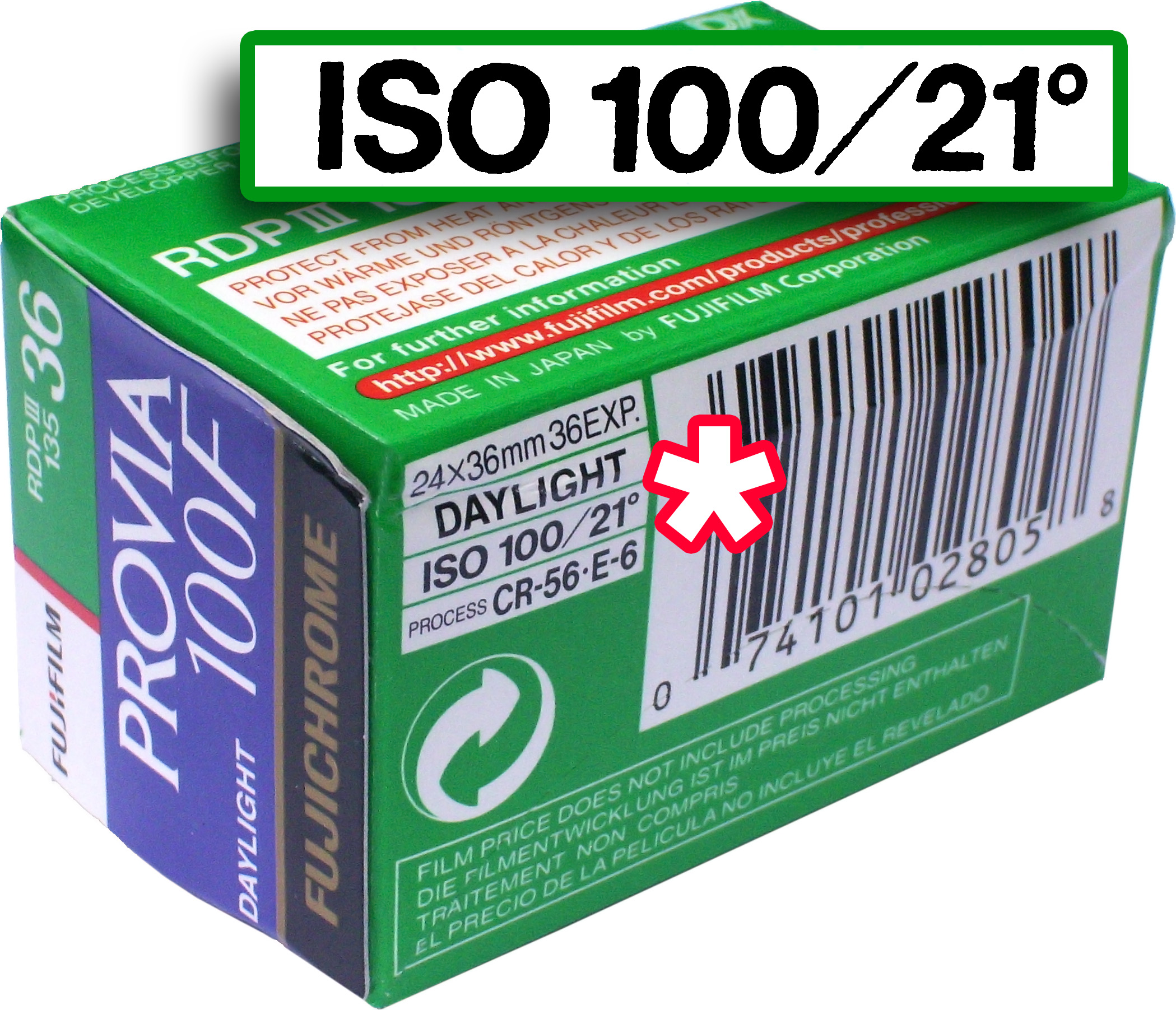|
NIKON D3000
The Nikon D3000 is a 10.2-megapixel DX format DSLR Nikon F-mount camera announced by Nikon on 30 July 2009. It replaces the D40 as Nikon's entry level DSLR. It features a 3.0-inch 230,000-dot resolution LCD monitor, CCD sensor with ISO 100–1600 (3200 with Boost) and 3D tracking Multi-CAM1000 11-point AF system which makes it quite similar to the Nikon D200 in these main parts. Initially priced with $599 MSRP, actual prices are much lower. The D3000 was superseded by the D3100 on August 19, 2010. The D3000 is the final Nikon DSLR to use a CCD sensor. Features * Nikon's 10.2-megapixel Nikon DX format CCD sensor. * Nikon EXPEED image processor. * Camera assisted "Guide" mode. * Active D-Lighting. * Sensor cleaning. * 3.0-inch 230,000-dot resolution fixed TFT LCD * Continuous Drive up to 3 frames per second. * 3D Color Matrix Metering II with Scene Recognition System. * 3D Tracking Multi-CAM 1000 autofocus sensor module with 11 AF points. * ISO sensitivity 100 to 1600 (3200 ... [...More Info...] [...Related Items...] OR: [Wikipedia] [Google] [Baidu] |
Nikon
(, ; ), also known just as Nikon, is a Japanese multinational corporation headquartered in Tokyo, Japan, specializing in optics and imaging products. The companies held by Nikon form the Nikon Group. Nikon's products include cameras, camera lenses, binoculars, microscopes, ophthalmic lenses, measurement instruments, rifle scopes, spotting scopes, and the steppers used in the photolithography steps of semiconductor fabrication, of which it is the world's second largest manufacturer. The company is the eighth-largest chip equipment maker as reported in 2017. Also, it has diversified into new areas like 3D printing and regenerative medicine to compensate for the shrinking digital camera market. Among Nikon's many notable product lines are Nikkor imaging lenses (for F-mount cameras, large format photography, photographic enlargers, and other applications), the Nikon F-series of 35 mm film SLR cameras, the Nikon D-series of digital SLR cameras, the Nikon Z-series of ... [...More Info...] [...Related Items...] OR: [Wikipedia] [Google] [Baidu] |
D3100
The Nikon D3100 is a 14.2-megapixel DX format DSLR Nikon F-mount camera announced by Nikon on August 19, 2010. It replaced the D3000 as Nikon's entry level DSLR. It introduced Nikon's new EXPEED 2 image processor and was the first Nikon DSLR featuring full high-definition video recording with full-time autofocus and H.264 compression, instead of Motion JPEG compression. It was also the first Nikon DSLR to provide high-definition video recording at more than one frame rate. Use is assisted by two Guide Modes: Easy Operation and Advanced Operation tutorial. On April 19, 2012, the D3200 superseded the D3100 as Nikon's entry-level DSLR. Features * Nikon's 14.2-megapixel Nikon DX format CMOS sensor with 12 Bit Resolution. * Nikon EXPEED 2 image processor. * Active D-Lighting. * Automatic chromatic aberration correction. * Sensor cleaning and airflow control system. * 3.0-inch 230,000-dot resolution fixed TFT LCD * Continuous Drive up to 3 frames per second. * Live view mode. Live v ... [...More Info...] [...Related Items...] OR: [Wikipedia] [Google] [Baidu] |
SDHC
Secure Digital, officially abbreviated as SD, is a proprietary non-volatile flash memory card format developed by the SD Association (SDA) for use in portable devices. The standard was introduced in August 1999 by joint efforts between SanDisk, Panasonic (Matsushita) and Toshiba as an improvement over MultiMediaCards (MMCs), and has become the industry standard. The three companies formed SD-3C, LLC, a company that licenses and enforces intellectual property rights associated with SD memory cards and SD host and ancillary products. The companies also formed the SD Association (SDA), a non-profit organization, in January 2000 to promote and create SD Card standards. SDA today has about 1,000 member companies. The SDA uses several trademarked logos owned and licensed by SD-3C to enforce compliance with its specifications and assure users of compatibility. History 1999–2003: Creation In 1999, SanDisk, Panasonic (Matsushita), and Toshiba agreed to develop and ma ... [...More Info...] [...Related Items...] OR: [Wikipedia] [Google] [Baidu] |
SD Memory Card
Secure Digital, officially abbreviated as SD, is a proprietary non-volatile flash memory card format developed by the SD Association (SDA) for use in portable devices. The standard was introduced in August 1999 by joint efforts between SanDisk, Panasonic (Matsushita) and Toshiba as an improvement over MultiMediaCards (MMCs), and has become the industry standard. The three companies formed SD-3C, LLC, a company that licenses and enforces intellectual property rights associated with SD memory cards and SD host and ancillary products. The companies also formed the SD Association (SDA), a non-profit organization, in January 2000 to promote and create SD Card standards. SDA today has about 1,000 member companies. The SDA uses several trademarked logos owned and licensed by SD-3C to enforce compliance with its specifications and assure users of compatibility. History 1999–2003: Creation In 1999, SanDisk, Panasonic (Matsushita), and Toshiba agreed to develop and market the S ... [...More Info...] [...Related Items...] OR: [Wikipedia] [Google] [Baidu] |
Raw Image Format
A camera raw image file contains unprocessed or minimally processed data from the image sensor of either a digital camera, a motion picture film scanner, or other image scanner. Raw files are named so because they are not yet processed and therefore are not ready to be printed, viewed or edited with a bitmap graphics editor. Normally, the image is processed by a raw converter in a wide-gamut internal color space where precise adjustments can be made before conversion to a viewable file format such as JPEG or PNG for storage, printing, or further manipulation. There are dozens of raw formats in use by different manufacturers of digital image capture equipment. Rationale Raw image files are sometimes incorrectly described as "digital negatives", but neither are they negatives nor do the unprocessed files constitute visible images. Rather, the Raw datasets are more like exposed but undeveloped film which can be converted (electronically developed) in a non-destructive manner mu ... [...More Info...] [...Related Items...] OR: [Wikipedia] [Google] [Baidu] |
JPEG
JPEG ( ) is a commonly used method of lossy compression for digital images, particularly for those images produced by digital photography. The degree of compression can be adjusted, allowing a selectable tradeoff between storage size and image quality. JPEG typically achieves 10:1 compression with little perceptible loss in image quality. Since its introduction in 1992, JPEG has been the most widely used image compression standard in the world, and the most widely used digital image format, with several billion JPEG images produced every day as of 2015. The term "JPEG" is an acronym for the Joint Photographic Experts Group, which created the standard in 1992. JPEG was largely responsible for the proliferation of digital images and digital photos across the Internet, and later social media. JPEG compression is used in a number of image file formats. JPEG/ Exif is the most common image format used by digital cameras and other photographic image capture devices; along with ... [...More Info...] [...Related Items...] OR: [Wikipedia] [Google] [Baidu] |
Flash (photography)
A flash is a device used in photography that produces a brief burst of light (typically lasting 1/1000 to 1/200 of a second) at a color temperature of about 5500 K to help illuminate a scene. A major purpose of a flash is to illuminate a dark scene. Other uses are capturing quickly moving objects or changing the quality of light. ''Flash'' refers either to the flash of light itself or to the electronic flash unit discharging the light. Most current flash units are electronic, having evolved from single-use flashbulbs and flammable powders. Modern cameras often activate flash units automatically. Flash units are commonly built directly into a camera. Some cameras allow separate flash units to be mounted via a standardized accessory mount bracket (a '' hot shoe''). In professional studio equipment, flashes may be large, standalone units, or studio strobes, powered by special battery packs or connected to mains power. They are either synchronized with the camera using a fl ... [...More Info...] [...Related Items...] OR: [Wikipedia] [Google] [Baidu] |
Film Speed
Film speed is the measure of a photographic film's sensitivity to light, determined by sensitometry and measured on various numerical scales, the most recent being the ISO system. A closely related ISO system is used to describe the relationship between exposure and output image lightness in digital cameras. Relatively insensitive film, with a correspondingly lower speed index, requires more exposure to light to produce the same image density as a more sensitive film, and is thus commonly termed a ''slow film''. Highly sensitive films are correspondingly termed ''fast films''. In both digital and film photography, the reduction of exposure corresponding to use of higher sensitivities generally leads to reduced image quality (via coarser film grain or higher image noise of other types). In short, the higher the sensitivity, the grainier the image will be. Ultimately sensitivity is limited by the quantum efficiency of the film or sensor. Film speed measurement systems His ... [...More Info...] [...Related Items...] OR: [Wikipedia] [Google] [Baidu] |
Autofocus
An autofocus (or AF) optical system uses a sensor, a control system and a motor to focus on an automatically or manually selected point or area. An electronic rangefinder has a display instead of the motor; the adjustment of the optical system has to be done manually until indication. Autofocus methods are distinguished as active, passive or hybrid types. Autofocus systems rely on one or more sensors to determine correct focus. Some AF systems rely on a single sensor, while others use an array of sensors. Most modern SLR cameras use through-the-lens optical sensors, with a separate sensor array providing light metering, although the latter can be programmed to prioritize its metering to the same area as one or more of the AF sensors. Through-the-lens optical autofocusing is usually speedier and more precise than manual focus with an ordinary viewfinder, although more precise manual focus can be achieved with special accessories such as focusing magnifiers. Autofocus ac ... [...More Info...] [...Related Items...] OR: [Wikipedia] [Google] [Baidu] |
Liquid Crystal Display
A liquid-crystal display (LCD) is a flat-panel display or other electronically modulated optical device that uses the light-modulating properties of liquid crystals combined with polarizers. Liquid crystals do not emit light directly but instead use a backlight or reflector to produce images in color or monochrome. LCDs are available to display arbitrary images (as in a general-purpose computer display) or fixed images with low information content, which can be displayed or hidden. For instance: preset words, digits, and seven-segment displays, as in a digital clock, are all good examples of devices with these displays. They use the same basic technology, except that arbitrary images are made from a matrix of small pixels, while other displays have larger elements. LCDs can either be normally on (positive) or off (negative), depending on the polarizer arrangement. For example, a character positive LCD with a backlight will have black lettering on a background that is the ... [...More Info...] [...Related Items...] OR: [Wikipedia] [Google] [Baidu] |
Image Processor
An image processor, also known as an image processing engine, image processing unit (IPU), or image signal processor (ISP), is a type of media processor or specialized digital signal processor (DSP) used for image processing, in digital cameras or other devices. Image processors often employ parallel computing even with SIMD or MIMD technologies to increase speed and efficiency. The digital image processing engine can perform a range of tasks. To increase the system integration on embedded devices, often it is a system on a chip with multi-core processor architecture. Function Bayer transformation The photodiodes employed in an image sensor are color-blind by nature: they can only record shades of grey. To get color into the picture, they are covered with different color filters: red, green and blue ( RGB) according to the pattern designated by the Bayer filter - named after its inventor. As each photodiode records the color information for exactly one pixel of the image, ... [...More Info...] [...Related Items...] OR: [Wikipedia] [Google] [Baidu] |
EXPEED
The Nikon Expeed image processor, image/video processors (often styled ''EXPEED'') are media processors for Nikon dslr, Nikon's digital cameras. They perform a large number of tasks: Bayer filtering, demosaicing, image sensor corrections/dark-frame subtraction, image noise noise reduction, reduction, Unsharp masking, image sharpening, image scaling, gamma correction, image enhancement/Active D-Lighting, colorspace conversion, chroma subsampling, framerate conversion, image distortion, lens distortion/chromatic aberration correction, image compression/JPEG encoding, video compression, Electronic visual display, display/HDMI, video interface driving, digital image editing, face detection, Audio signal processing, audio processing/Audio compression (data)#Audio, compression/MP3, encoding and computer data storage/data transmission. Expeed's Multiprocessor, multi-processor system on a chip solution integrates an image processor in multi-core processor architecture, with each single pro ... [...More Info...] [...Related Items...] OR: [Wikipedia] [Google] [Baidu] |








